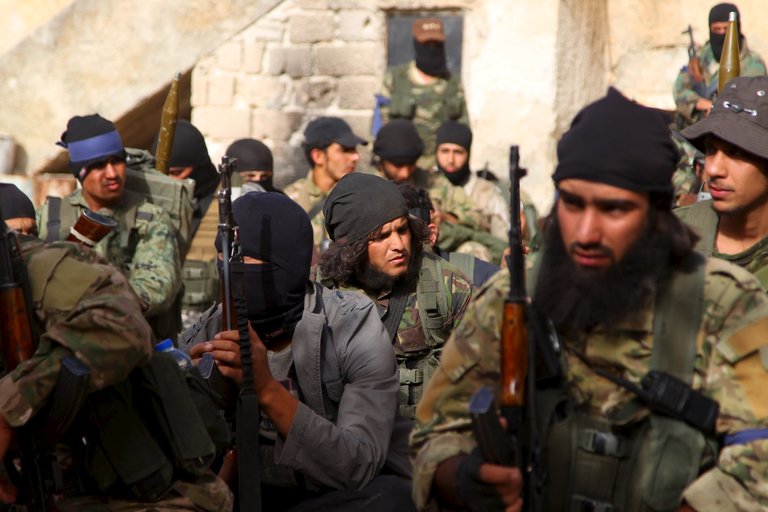Washington- American officials accuse him of being part of the “inner leadership circle” of Al Qaeda’s Syrian affiliate, most widely known as the Nusra Front, and of raising as much as $5 million for the terrorist group while signing up thousands of fighters.
But Abdallah Muhammad al-Muhaysini insists that he could not be more surprised to learn that the United States Treasury Department had designated him as a terrorist and ordered his funds frozen.
“Today, Syrians are shocked to find that the United States has put on the terror list a person whom they consider to be a national symbol,” Mr. Muhaysini said in a Skype interview with The New York Times last week. “It’s a very bizarre thing,”
“Abdallah al-Muhaysini is an independent figure,” he added. “How can the American State Department describe Abdallah al-Muhaysini as belonging to Fath al-Sham?” he said, using a version of the Nusra Front’s new name.
Until now, Mr. Muhaysini, a 31-year-old who said he was calling from Syria, had not been the type to contact Western publications.
That he is doing so is most likely a reflection of how the Nusra Front is trying to buy itself some flexibility by publicly rebranding — even if no one in counterterrorism circles believes it is truly changing. Public relations efforts have become paramount in the contest within the jihadist world for recruits and resources, and in the effort to evade military reprisals from foreign powers.
In what analysts say is a calculated move to hide its ties to Al Qaeda, the Nusra Front recently rebranded itself as a local insurgency against the regime of Bashar al-Assad, declaring that it no longer intended to target the West and changing its name to Jabhat Fath al-Sham, or the Levant Conquest Front.
But experts and intelligence officials say the group is still an essential part of Al Qaeda, committed as ever to competing with ISIS for territory and support and leaving the fight against pro-Assad forces a lower priority.
Colin P. Clarke, an analyst at the RAND Corporation, argues that the Nusra Front is actually the biggest of Al Qaeda’s branches, with approximately 10,000 fighters. And he characterized the group’s public split from Al Qaeda as “simply a feint,” a way for the group to hunker down and rebuild as ISIS gets pounded by airstrikes.
“It has been used to give themselves a little bit of breathing room,” Mr. Clarke said.
Just as officials and analysts were not buying the Nusra Front’s attempt to rebrand, they will not be trusting Mr. Muhaysini’s protests that he is merely a religious scholar with no stake in the jihadist competition in Syria.
Experts on the Nusra Front agree with American and European officials in considering Mr. Muhaysini to be a senior leader in the group, with deep ties to Al Qaeda’s international network. And in his public communications up to now, Mr. Muhaysini himself has left little room between his positions and Al Qaeda’s, appearing in social media posts eulogizing dead Qaeda leaders and encouraging suicide bombers. His biography has even appeared in the Qaeda magazine Al Risalah.
In a Skype interview on Friday, from a room illuminated by a single fluorescent bulb, Mr. Muhaysini seemed relaxed, often breaking into a toothy grin as he insisted that he posed no threat to the West.
When asked, he acknowledged having contacted Ayman al-Zawahri, the global chief of Al Qaeda. “In 2014, yes, I talked to Ayman Zawahri because he is an old and generous sheikh and I asked him to speak about Daesh because he has a huge audience,” he said, using an acronym for ISIS. “I wanted him to talk about Daesh to prevent the youth from joining.”
He describes the images that have appeared of him with other well-known Qaeda leaders, and the comments he has made about them, as similar to photographs that might emerge from a summit meeting in which President Obama is seen sitting next to President Vladimir V. Putin of Russia. “It doesn’t mean that they share an ideology,” he said.
The New York Times
